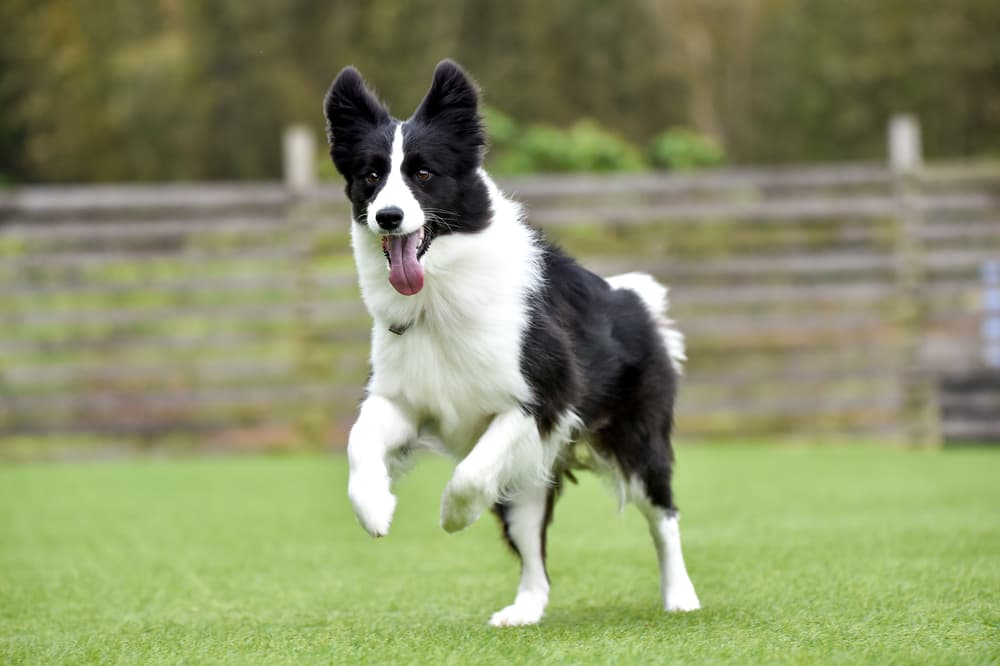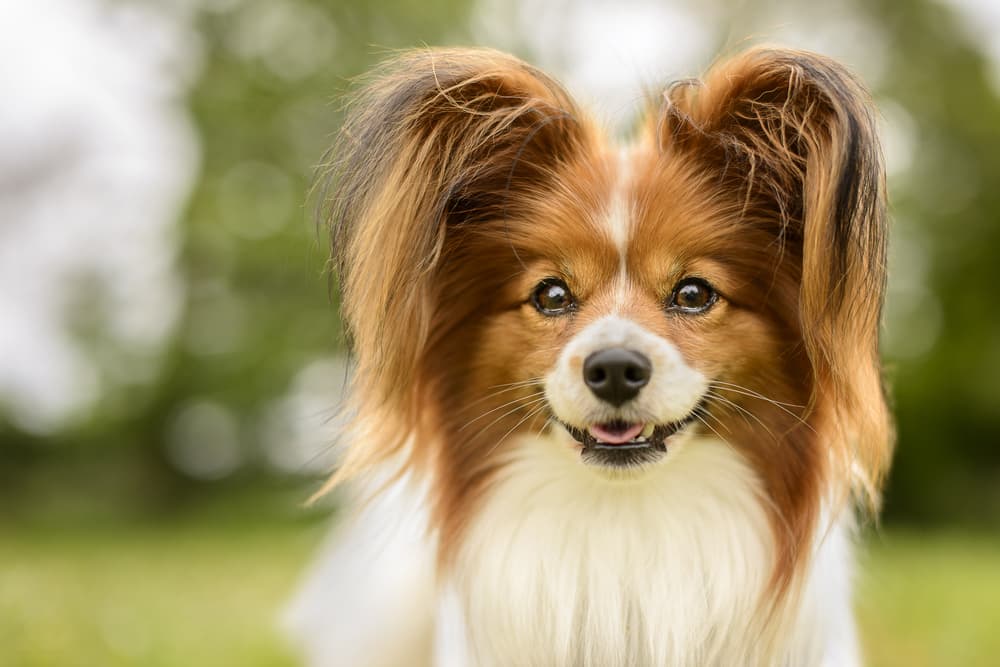14 Velcro Dog Breeds That Cling to Their Pet Parents

Does your dog only have eyes for you? Do they follow you everywhere? Are they on your lap as you’re reading this? Your dog may be what’s known as one of the “Velcro dog breeds.”
While many dogs love having independence and appreciate personal space, others tend to be drawn to their humans at all times. Every dog is an individual, of course, but some breeds are known to be especially clingy.
It’s important for pet parents to recognize so-called “Velcro” behaviors and understand how to help their pups live their happiest, healthiest lives. Read on for everything you need to know about Velcro dogs, from classic characteristics to expert training tips.
What Is a Velcro Dog?

First things first: Where does the term “Velcro dog” come from, anyway?
Like the famously clingy fastener, so-called Velcro dogs like to stick very close to their humans. Behaviors may range from eager couch snuggles to concerning behaviors that are symptoms of separation anxiety.
When not receiving the proper amounts of exercise, mental stimulation, and companionship, some breeds are more likely to become clingy.
It’s important to understand your breed’s unique needs, history, and characteristics to ensure they’re receiving the proper care. Learn more about the clingiest dog breeds below.
14 Velcro Dog Breeds
Which breeds are Velcro dogs? Clingy dogs come in every shape and size, but the following breeds are especially prone to Velcro behaviors.
Pomeranian

The quintessential lap dogs, Pomeranians have a reputation for being extra snuggly (and “extra” in general). Beloved by Queen Victoria, the foxy breed has a pampered pedigree.
“They’re actually related to some of the sledding and working Spitz-type dogs of Europe, but were bred down to become lap dogs and never looked back,” says Kimberlee Tolentino, owner and head trainer at Lugaru K9 Training. “Every Pomeranian I’ve ever met has had an innate desire to be close to their favorite human as often as possible.”
Chihuahua

Similar to Pomeranians, Chihuahuas are pint-sized pups with a long history of lap-time: the breed is one of the oldest in the Americas, tracing its lineage to pre-Colombian times. While small in size, Chihuahuas have large personalities and aren’t shy about requesting attention from their favorite humans, notes Dr. Corinne Wigfall, resident veterinarian at SpiritDog Training.
German Shepherd

Not all clingy dog breeds are traditional lap dogs. Originally bred for herding, German Shepherds excel as working dogs – but can become “needy” when not challenged. “The German Shepherd is surprisingly clingy, and in modern society can develop severe separation anxiety if not properly trained and socialized,” says Dr. Wigfall. “This separation anxiety can lead to destructive behaviors around the home, or attempts to escape, which can lead to injury.”
Border Collie

Like German Shepherds, many herding breeds run the risk of becoming clingy when they stray too far from their hardworking roots. Border Collies are near the top of the list, says board-certified veterinarian Dr. Melissa M. Brock. “These breeds are known for their intelligence and desire to work alongside humans,” she says. “They also have a very strong sense of loyalty to their owners.”
Australian Shepherd

Before taking over Instagram with their couture coats and sparkling blue eyes, Aussies were cowboy companions, prized for their boundless energy and unparalleled herding skills. They make excellent working dogs, but can become prone to Velcro behavior in less stimulating environments, notes Dr. Brock.
Papillon

The very definition of “cute and cuddly,” Papillons charmed their way into the royal courts of Europe, counting Madame de Pompadour, Louis XIV, and Marie Antoinette among their admirers. Bred for centuries to be adorable lap warmers, they bond strongly and enthusiastically with their humans – and, perhaps unsurprisingly, are card-carrying members of the Velcro dog club.
French Bulldog

Who can resist a Frenchie? Petite and polite, French Bulldogs were the “It Dogs” of 19th century Parisian café society, making appearances in paintings by Degas and Toulouse-Lautrec. Their je ne sais quoi is undeniable – as is their penchant for keeping close tabs on their humans.
Pug

Tracing their roots back 2,000 years to ancient China, Pugs were bred as companions for emperors and the royal court. Today, they’re still beloved for their sweet, sensitive dispositions and people-pleasing ways. The only potential “downside”? Pugs thrive on being with their families and do not like being left alone.
Pit Bull

As Pittie parents will tell you, Pit Bulls are certified love bugs. But for rescues, Velcro behavior points to separation anxiety, says Tom Bohne, founder of Pit Bull advocacy organization Kennel to Couch. “Pit bulls are often very attached to their owners, but this is more likely related to their shelter experience and not an inborn trait. When they are rescued, they hold on tight to their new family members,” he explains. “They also tend to have the longest shelter stays, which can make them prone to extreme separation anxiety, even after they are adopted.”
Yorkshire Terrier

With roots as both workers and cuddlers, Yorkshire Terriers are extremely people-oriented. Originally bred to hunt rats in mines, they eventually became the fashionable companions of Victorian women – and have been purse pups ever since.
Labrador Retriever

Endlessly affectionate and famously friendly, the Labrador Retriever is the most popular breed in the United States for good reason. But many people don’t realize that this social butterfly can be on the needy side. “Labrador Retrievers are surprisingly clingy,” says Dr. Brock. “They love to snuggle with their humans and are often referred to as Velcro dogs.”
Vizsla

With their athletic builds and serious expressions, Vizslas may not seem to be Velcro material. But looks can be deceiving – the hunting breed is widely recognized to be among the most dependent on human companionship, and should not regularly be left alone. “The Vizsla is perhaps the clingiest dog breed,” says Dr. Sabrina Kong. “They rarely leave their owners’ sides and love to share time with them, especially if that time involves sports and physical activities.”
Doberman

Don’t let the Doberman’s intimidating stare and all-business build fool you – like the Vizsla, this powerful breed is a serious softie. “They might look scary, but their guardian personality comes from the intense love and protection instinct they feel for their owners,” says Dr. Kong.
Dachshund

First and foremost, Dachshunds are famous for their signature shape and often-mispronounced name. Next up? Their Velcro tendencies. These fiercely loyal low-riders prefer to be with their families at all times. “Dachshunds are known for their intolerance for being left alone, which could make them difficult to have in a single-parent household,” says trainer Jen Jones. “The clingy nature of the Dachshund can be overwhelming for the owner.”
What to Do If You Need Some Space

As “man’s best friend,” dogs develop strong, important bonds with their families and thrive alongside their human companions. But if your pup is a little too close for comfort, it’s important to foster independence and ensure they’re not suffering from separation anxiety.
Could you (and your pup) use a little space? Consider the following tips from Dr. Wigfall:
Create a “safe space” for your dog. For needy dogs, crates are havens. “Crate training can help dogs feel secure in their space when you leave the home,” she says. “Start small and use lots of positive reinforcement before building up to leaving.”
Train early and often. Training isn’t only for puppies – lifelong training provides dogs with valuable mental stimulation and creates good habits. “Obedience training, particularly sitting and staying in an area such as on their bed, helps them feel confident and independent in a safe space setting,” explains Dr. Wigfall.
Practice active, calm separation. When home, have your dog stay alone in a room for five minutes, then gradually build up the time and distance between you and your dog. Some advice from Dr. Wigfall: “When you go back into the room, do not make a big fuss. If you are leaving the home, try to just leave without lots of cuddles.”
Provide enriching toys. When leaving the room or your home, make sure your pup has plenty of engaging toys, says Dr. Wigfall. “Using stuffed KONGs, Nylabones, or puzzle toys can help keep your dog entertained”
Consult your veterinarian. Separation anxiety is a serious condition that can negatively impact your dog’s health and happiness. If you’re concerned about your pet, Dr. Wigfall recommends talking to your veterinarian about professional training, and possibly even medication options. “Medications are best used in combination with a training program that involves desensitization to being left alone. Working with a veterinary behaviorist can help tailor a program to suit your dog’s needs.”
Velcro Dogs & Pet Parents: Sticking by Each Other
From small Velcro dog breeds to large Velcro dog breeds, some pups just like to stay extra-close to their humans. Clingy can be cute, but if your “shadow” is a little too close, it’s important to ensure that your dog isn’t experiencing stress or separation anxiety. The more you know about your dog and their breed, the more you can enjoy those cuddles!









